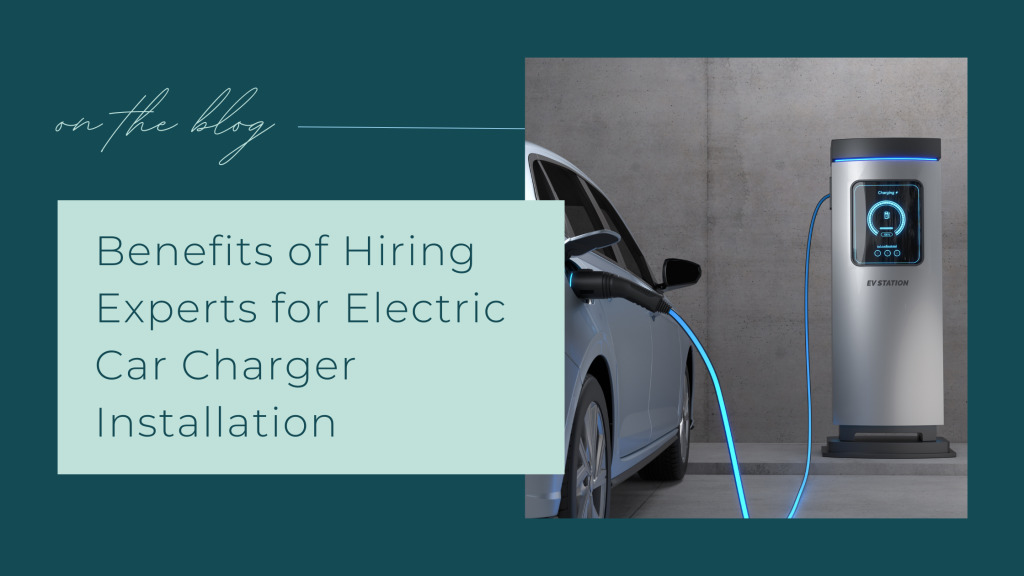Introduction to Electric Car Charger Installation
The rise of electric vehicles has created new opportunities for homeowners and businesses alike. As more people make the switch to environmentally friendly transportation, the need for reliable charging infrastructure grows significantly. A proper electric car charger installation is the foundation of convenience, efficiency, and safety for every EV owner.
At first glance, installing a charger may seem straightforward, especially with so many online guides showing how to electric car charger installation step by step. However, the process requires a deep understanding of electrical systems, building codes, and safety regulations. This is why choosing a professional electric car charger installation service is the smarter option. Experts ensure your charger functions efficiently, complies with local codes, and avoids risks that could lead to costly repairs or hazards.
Tools and Materials Required
Installing an electric car charger is not the same as plugging in a household appliance. The setup demands specialized tools and certified materials to ensure reliable performance. Common tools and materials include:
- Drill and Mounting Equipment: For securing the charging unit to walls or pedestals.
- Voltage Tester: To confirm proper electrical current flow.
- Conduit and Wiring: Heavy-duty wires and protective conduits rated for EV chargers.
- Circuit Breakers: Proper breakers to support the charger’s electrical load.
- Safety Gear: Gloves, goggles, and insulated tools for protection.
- Permits and Documentation: Depending on local laws, installations often require approved permits and inspections.
Without these essentials, installations may not meet safety requirements. Professionals arrive with the right tools and certified components, reducing the risk of using substandard parts that could lead to inefficiency or failure.
Step-by-Step Instructions
Although the installation process varies by charger type and electrical setup, the basic procedure typically follows these steps:
- Assessment and Planning: Evaluate the property’s electrical capacity and choose the best charger location for accessibility and safety.
- Power Upgrade (if needed): In some cases, the electrical panel must be upgraded to handle the additional load.
- Mounting the Charger: Secure the charging station to a wall or pedestal.
- Running Electrical Wiring: Route conduit and wiring from the electrical panel to the charger location.
- Connecting to the Circuit: Install and connect the breaker to ensure the charger receives sufficient power.
- Testing the Charger: Confirm that the voltage is correct and the system powers on safely.
- Final Inspection: Verify compliance with local building codes and regulations.
While this outline looks manageable, the reality is far more complex. Mistakes during wiring, breaker installation, or grounding can lead to malfunction or serious hazards. This is where professional installation provides unmatched value.
Safety Tips and Best Practices
Electric car charger installation involves high-voltage equipment, which requires strict attention to safety. Attempting a do-it-yourself project without adequate training can expose you to risks such as electric shocks, fire hazards, or damage to the electrical system.
Here are essential safety tips:
- Always Shut Off Power: Turn off electricity at the breaker box before starting any work.
- Use the Right Breaker: Match the charger’s power requirements with an appropriate circuit breaker.
- Proper Grounding: Ensure the charger is correctly grounded to avoid shocks.
- Weather Protection: For outdoor installations, use weatherproof enclosures to protect equipment.
- Hire a Licensed Electrician: Professionals are trained to handle high-voltage systems safely.
A professional electric car charger installation eliminates these risks. Certified electricians follow strict codes, use quality materials, and ensure compliance with safety standards. This not only protects your home but also extends the life of your charger.
Final Thoughts and Maintenance Tips
Hiring experts for electric car charger installation is not just a matter of convenience. It is an investment in safety, long-term performance, and peace of mind. Professionals deliver precision, efficiency, and code-compliant setups that save you from unexpected expenses and hazards.
To maintain your charger after installation:
- Inspect Regularly: Check wiring, plugs, and connectors for wear or damage.
- Keep the Area Clear: Avoid blocking the charger with vehicles or objects that may cause strain on cables.
- Clean Periodically: Dust or wipe down the unit to prevent buildup.
- Schedule Inspections: Have a professional check the system every few years to ensure continued safety.
- Monitor Performance: Pay attention to charging times and output. Any irregularities may signal the need for servicing.
In conclusion, while it may seem tempting to look up how to electric car charger installation and attempt it yourself, the smarter choice is hiring professionals. Expert installation guarantees that your charger is efficient, durable, and most importantly, safe. As electric vehicles continue to shape the future of transportation, investing in professional installation ensures your charging system is reliable for years to come.



